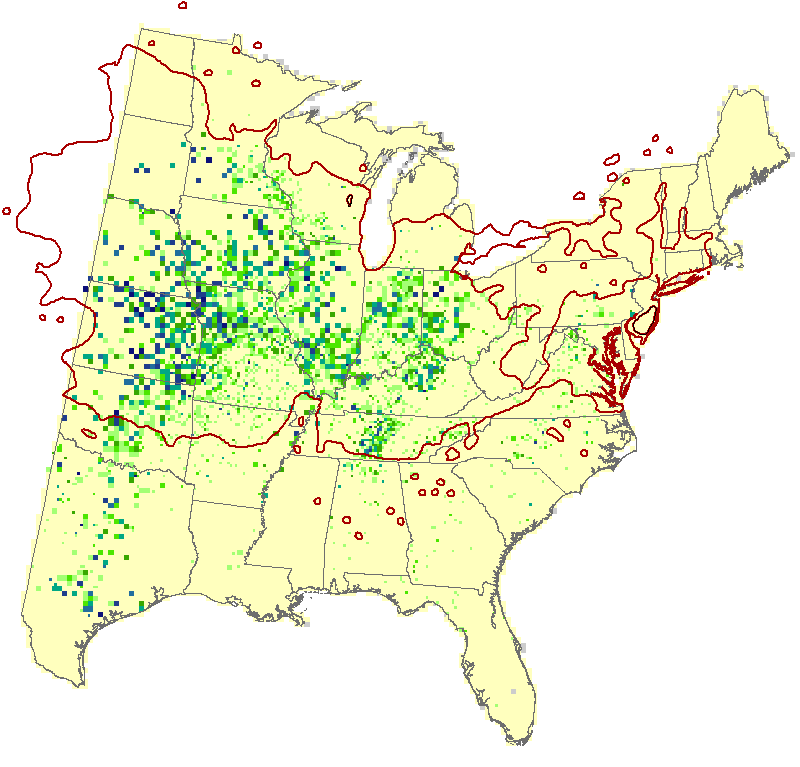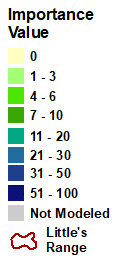hackberry (Celtis occidentalis)
Model Reliability: Medium
| GCM SCENARIO | % Area Occ | Ave IV | Sum IV | Future/Current IV |
|---|---|---|---|---|
| Actual | 9.3 | 8 | 21950 | N/A |
| RFimp | 12.5 | 4.2 | 15324 | 0.7 |
| CCSM45 | 20.4 | 4 | 24016 | 1.57 |
| CCSM85 | 27.5 | 3.7 | 29922 | 1.95 |
| GFDL45 | 27.2 | 4.3 | 34518 | 2.25 |
| GFDL85 | 32.7 | 4.1 | 39485 | 2.58 |
| HAD45 | 27 | 3.9 | 30765 | 2.01 |
| HAD85 | 33.2 | 3.4 | 32981 | 2.15 |
| GCM45 | 29.1 | 3.5 | 29773 | 1.94 |
| GCM85 | 35 | 3.3 | 34140 | 2.23 |
Regional Summary Tree Tables
Summaries for tree species are available for a variety of geographies, in both PDF and Excel format. These summaries are based on Version 4 of the Climate Change Tree Atlas
Interpretation Guide
Hackberry is similar to sugarberry but more widely distributed (14.1% of area) and slightly more northern across the western half of the eastern US; it is an abundant species with high adaptability (drought tolerant) and a medium reliability model suggesting increasing habitat in future. These yield an overall rating of very good for capability to cope, plus a high recommendation from SHIFT as an infill species.
Family: Ulmaceae
Guild: opportunistic, fast-growing understory tolerant
Functional Lifeform: small to medium-size deciduous tree
| 5.7 | 1.66 |
| 0.30 |  |
MODFACs
What traits will impact hackberry's ability to adapt to climate change, and in what way?:
Primary Positive Traits
Drought
Primary Negative Traits
Fire topkill



